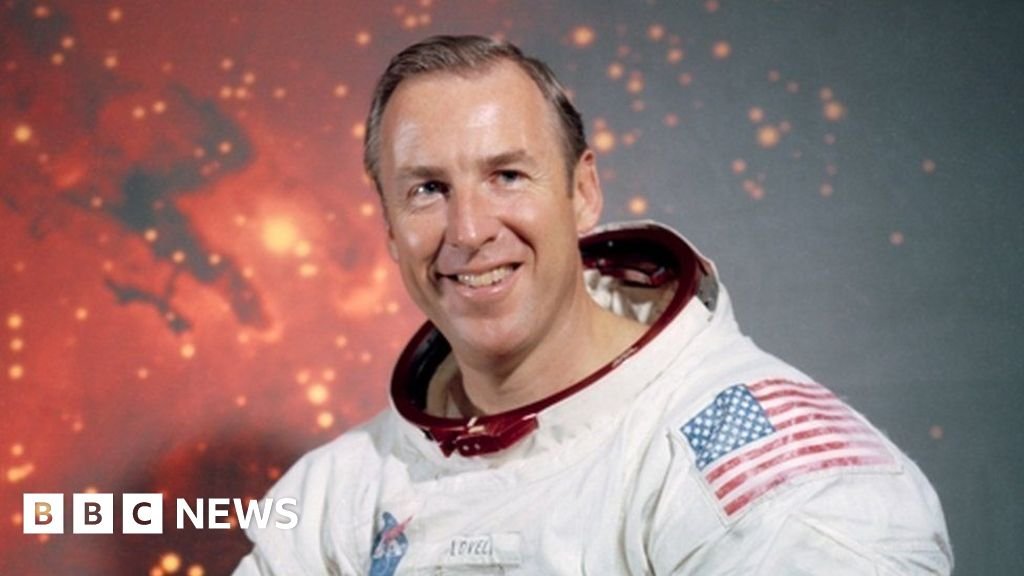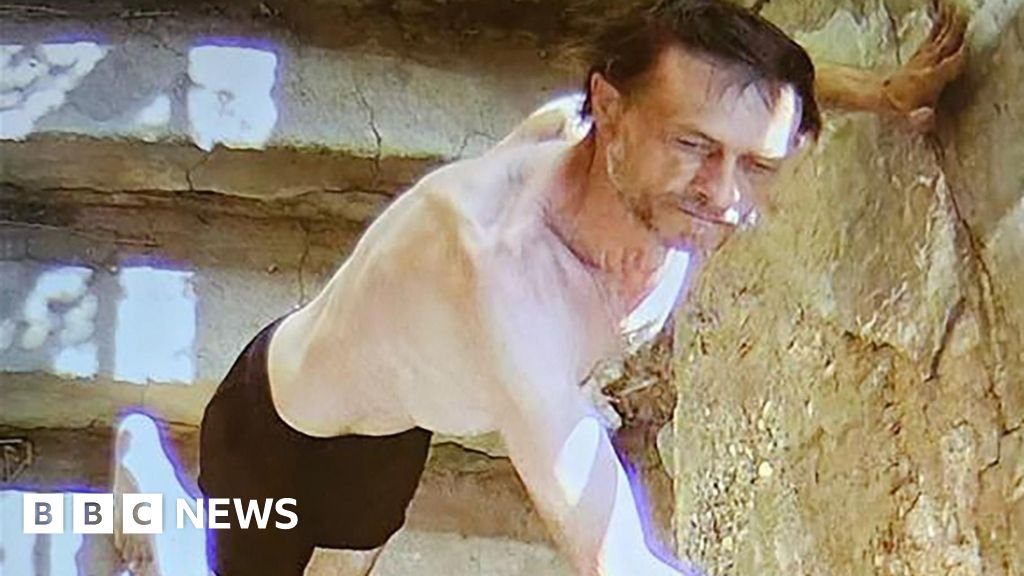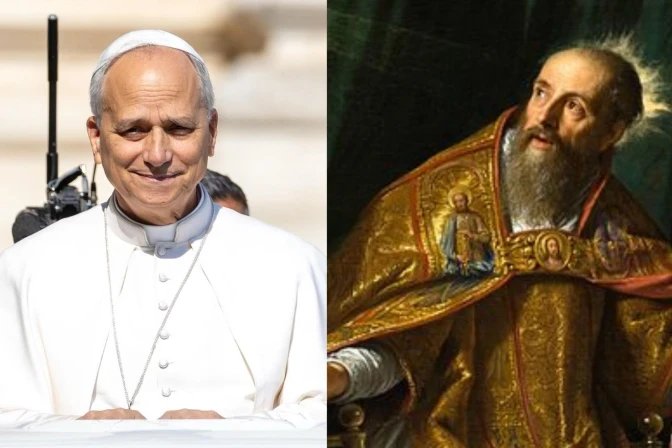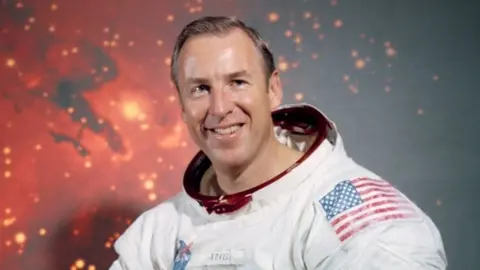 Getty Images
Getty ImagesAstronaut Jim Lovell, who guided the Apollo 13 mission safely back to Earth in 1970, has died aged 97.
Nasa said he “turned a potential tragedy into a success” after an attempt to land on the Moon was aborted due to an explosion onboard the spacecraft while it was hundreds of thousands of miles from Earth.
Tens of millions watched on television as Lovell and two other astronauts splashed back down into the Pacific Ocean, a moment which has become one of the most iconic in the history of space travel.
Lovell, who was also part of the Apollo 8 mission, was the first man to go to the Moon twice.
Acting Nasa head Sean Duffy said he had helped the US space programme to “forge a historic path”.
In a statement, Lovell’s family said: “We will miss his unshakeable optimism, his sense of humor, and the way he made each of us feel we could do the impossible. He was truly one of a kind.”
Lovell’s remarkable life
One Saturday, a 16-year-old hauled a heavy, three-foot tube into the middle of a large field in Wisconsin.
He had persuaded his science teacher to help him make a makeshift rocket. Somehow, he managed to get his hands on the ingredients for gunpowder – potassium nitrate, sulphur and charcoal.
He pulled on a welder’s helmet for protection. He packed it with powder, struck a match and ran like hell.
The rocket rose 80 feet into the air and exploded. Had the chemicals been packed slightly differently, he would have been blown to pieces.
For Jim Lovell, this was more than a childish lark.
In achieving his dream to be a rocket scientist, he would become an American hero. But it wasn’t going to be easy.
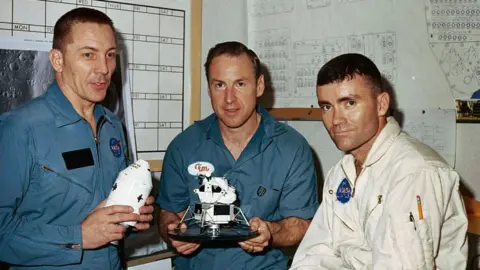 Getty Images
Getty ImagesJames Arthur Lovell Jr was born on 25 March 1928 – just a year after Charles Lindbergh made his historic trip across the Atlantic.
“Boys like either dinosaurs or airplanes,” he said. “I was very much an airplane boy.”
But when he was five years old, his father died in a car accident.
His mother, Blanche, worked all hours – struggling to keep the family in clothes and food. University was well beyond their financial reach.
Navy pilot
The answer was the US Navy, which was hungry for new pilots after World War II. It wasn’t building rockets but at least it involved flying.
Lovell signed up to a programme that sent him to college at the military’s expense while training as a fighter pilot.
Two years in, he gambled and switched to the Navy Academy at Annapolis, on Chesapeake Bay, in the hope of working with his beloved rockets.
It was a lucky decision.
A few months later, the Korean War broke out and his former fellow apprentice pilots were sent to South East Asia. Many never got to finish their education.
Marriage was banned at Annapolis and girlfriends discouraged. The navy did not want its midshipmen wasting their time on such frivolities.
But Lovell had a sweetheart. Marilyn Gerlach was the high school girl he’d shyly asked to the prom.
Women were not allowed on campus and trips outside were limited to 45 minutes. Somehow the relationship survived.
Just hours after his graduation in 1952, the newly commissioned Ensign Lovell married her.
They would be together for more than 70 years, until Marilyn’s death in 2023.
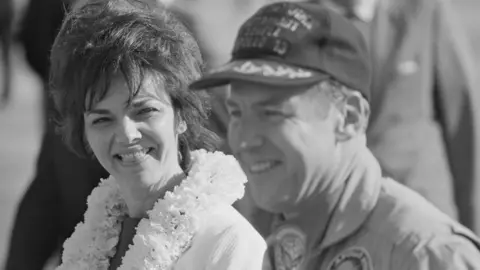 Getty Images
Getty ImagesHe did everything he could to advertise his love of rocketry.
His thesis at the Navy Academy was in the unheard of topic of liquid-fuel engines. After graduation, he hoped to specialise in this pioneering new technology.
But the navy had other ideas.
Lovell was assigned to an aircraft carrier group flying Banshee jets off ships at night. It was a white-knuckle, high-wire business fit only for daredevils. But for Lovell, it wasn’t enough.
Space
In 1958, he applied to Nasa.
Project Mercury was America’s attempt to place a man in orbit around the Earth. Jim Lovell was one of the 110 test pilots considered for selection but a temporary liver condition put paid to his chances.
Four years later, he tried again.
In June 1962, after gruelling medical tests, Nasa announced its “New Nine”. These would be the men to deliver on President Kennedy’s pledge to put American boots on the Moon.
It was the most elite group of flying men ever assembled. They included Neil Armstrong, John Young and, fulfilling his childhood dream, Jim Lovell.
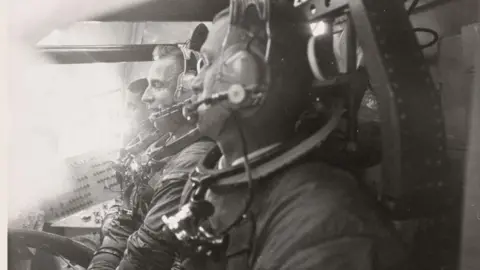 Getty Images
Getty ImagesThree years later he was ready.
His first trip into space was aboard the two-man Gemini 7. Lovell and fellow astronaut Frank Borman ate a steak-and-eggs breakfast and blasted off.
Their mission: to find out if men could survive two weeks in space. If not, the Moon was out of reach.
The endurance record complete, Lovell’s next flight was in command of Gemini 12 alongside space rookie, Buzz Aldrin.
This time they proved that man could work outside a spacecraft. Aldrin clambered awkwardly into the void, spending five hours photographing star fields.
Now for the Moon itself.
The crew of Apollo 8 would be the first to travel beyond low Earth orbit and enter the gravitational pull of another celestial body.
It was Nasa’s most dangerous mission yet.
Earthrise
The Saturn V rocket that shot Lovell, Borman and William Anders out of our atmosphere at 25,000 miles per hour was huge – three times larger than anything seen on the Gemini programme.
As navigator, Lovell took with him a sextant to take star readings – in case the computers failed and they had to find their own way home.
Sixty-eight hours after take-off, they made it.
The engines fired and Apollo 8 slid silently behind the Moon. The men heard a cackle in their headsets as the radio signal to Mission Control faltered and then failed.
The spellbound astronauts pinned themselves to the windows, the first humans to see the far side of our nearest celestial neighbour. And then, from over the advancing horizon, an incredible sight.
“Earthrise,” gasped Borman.
“Get the camera, quick,” said Lovell.
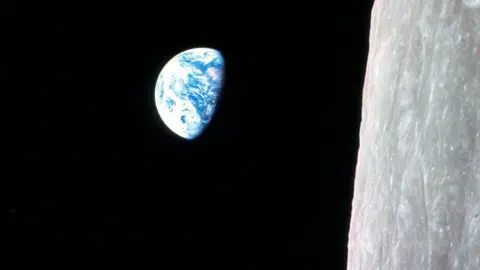 Getty Images
Getty ImagesIt was Christmas Eve 1968.
America was mired in Vietnam abroad and civil unrest at home. But at that moment, it seemed that humanity was united.
The people of the world saw their planet as the astronauts saw it – fragile and beautiful – shining in the desolation of space.
Lovell read from the Book of Genesis, the basis of many of the world’s great religions, to the people of the Earth.
“And God called the light Day, and the darkness he called Night. And the evening and the morning were the first day.”
For him, it was an image that changed our world forever. He put his thumb against the window and the whole world disappeared behind it. It was the most moving experience of his life.
As the spacecraft re-emerged from the darkness, Lovell was first to announce the good news. “Please be advised,” he said as the radio crackled back into life, “there is a Santa Claus.”
At that very moment, 239,000 miles away, a man in a blue Rolls-Royce pulled up outside Lovell’s house in Houston.
He walked past the dozens of reporters camped outside and handed a box to Marilyn.
She opened the star-patterned tissue paper and pulled out a mink jacket. “Happy Christmas,” said the card that came with it, “and love from the Man in the Moon.”
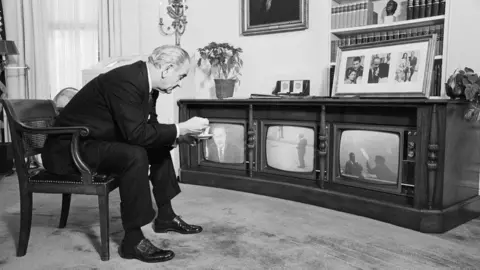 Getty Images
Getty ImagesThey went up as astronauts and came down celebrities. The people of the Earth had followed their every move on TV.
There were ticker tape parades, congressional honours and a place on the cover of Time Magazine. And they hadn’t even set foot on the Moon.
That honour went, of course, to Neil Armstrong and Buzz Aldrin.
A year later, Kennedy’s dream was posthumously seen to fruition. A small step was taken and mankind took its giant leap. The New Nine had done their job.
‘Houston, we’ve had a problem’
In April 1970, it was Jim Lovell’s turn. Fortunately, the crew of Apollo 13 did not believe in unlucky numbers.
Lovell, Jack Swigert and Fred Haise were men of science – highly trained and determined to follow Armstrong and Aldrin to the lunar surface. But things went badly wrong.
They were 200,000 miles above the Earth and closing in on their target when they spotted low pressure in a hydrogen tank. It needed a stir to stop the super cold gas settling into layers.
Swigert flicked the switch. It should have been a routine procedure but the command module, Odyssey, shuddered. Oxygen pressure fell and power shut down.
“I believe we’ve had a problem here,” said Swigert. Lovell had to repeat the message to a stunned Mission Control: “Houston, we’ve had a problem.”
It was one of the greatest understatements of all time. The crew were in big trouble – a dramatic explosion had disabled their craft.
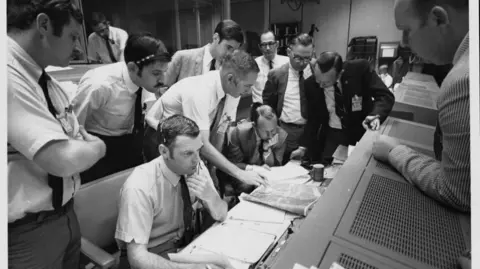 Getty Images
Getty ImagesHaise and Lovell worked frantically to boot up the lunar module, Aquarius.
It was not supposed to be used until they got to the Moon. It had no heat shield, so could not be used to re-enter the Earth’s atmosphere. But it could keep them alive until they got there.
The world stopped breathing and watched.
For a second time, Jim Lovell had brought the world together as one. The first time it had been for Earthrise, the second would be to witness his fight to survive.
“For four days,” said Marilyn, “I didn’t know if I was a wife or a widow.”
Temperatures fell to freezing, food and water were rationed. It was days before they limped back to the fringes of Earth’s atmosphere. They climbed back aboard the Odyssey and prayed the heat shield had not been damaged.
The radio silence that accompanies re-entry went on far longer than normal. Millions watched on TV, many convinced that all was lost.
After six agonising minutes, Jack Swigert’s voice cut through the silence.
The team on the ground held its breath until the parachutes deployed and the crew was safely down.
The mission was Nasa’s greatest failure and, without question, its finest hour.
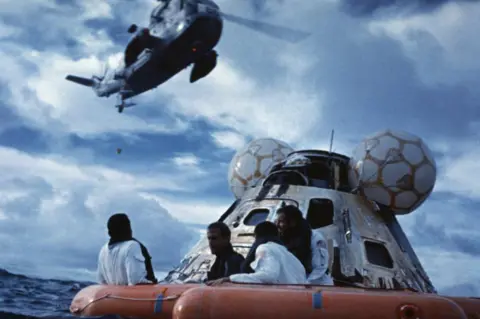 Getty Images
Getty ImagesLovell retired from the navy in 1973 and opted for a the quiet life, working for the Bay-Houston Towing Company, giving speeches and serving as president of the National Eagle Scout Association.
His book, Lost Moon: The Perilous Voyage of Apollo 13, became the famous 1995 movie, starring Tom Hanks as Jim Lovell.
For the film, the director asked him to dress up as an admiral. It was for a cameo scene, shaking hands with Hanks when the crew were rescued from the sea.
But the old American hero wasn’t having it.
Jim Lovell had been to the Moon twice, witnessed Earthrise and narrowly avoided a cold death in space – and saw no reason to falsely burnish his résumé.
He took out his old navy uniform, dusted it down and put it on for the cameo appearance.
“I retired as a captain,” he insisted, “and a captain I will be.”

